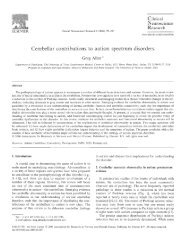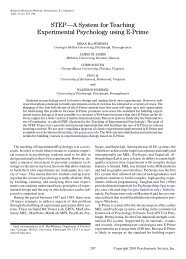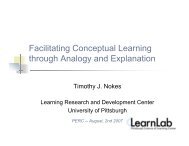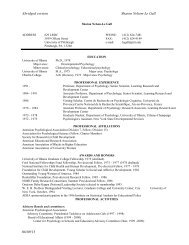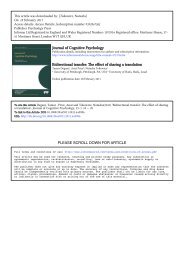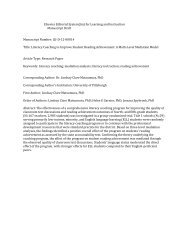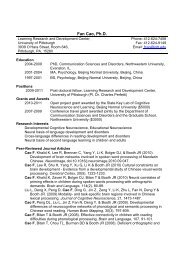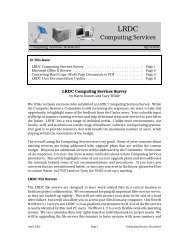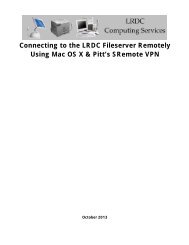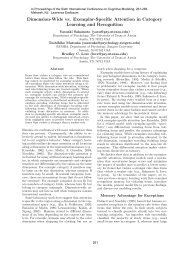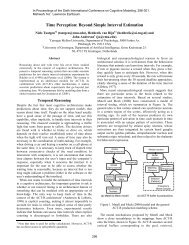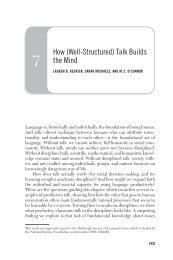Nested Learning Systems for the Thinking Curriculum
Nested Learning Systems for the Thinking Curriculum
Nested Learning Systems for the Thinking Curriculum
Create successful ePaper yourself
Turn your PDF publications into a flip-book with our unique Google optimized e-Paper software.
FIGURE 2. Disaggregated NAEP scores <strong>for</strong> 1990 through 2007, fourth-grade ma<strong>the</strong>matics. Source: U.S. Department of Education,Institute of Education Sciences, National Center <strong>for</strong> Education Statistics, National Assessment of Educational Progress (NAEP), NAEP DataExplorer, available online at http://nces.ed.gov/nationsreportcard.FIGURE 3. Disaggregated NAEP Scores <strong>for</strong> 1990 through 2007, eighth-grade ma<strong>the</strong>matics. Source: U.S. Department of Education,Institute of Education Sciences, National Center <strong>for</strong> Education Statistics, National Assessment of Educational Progress (NAEP), NAEP DataExplorer, available online at http://nces.ed.gov/nationsreportcard.which large numbers of our minority students, along with someWhite children of poverty, seemed to be fundamentally illiterateor innumerate, have changed. We are on <strong>the</strong> way to meeting our“basic education” goals—and we have achieved this even as wehave absorbed growing numbers of students with limited Englishproficiency into <strong>the</strong> nation’s schools. It appears that <strong>the</strong> standardsef<strong>for</strong>t, including requirements <strong>for</strong> disaggregated test score reporting,is having <strong>the</strong> hoped-<strong>for</strong> equity effects. We are teaching basicliteracy and math to more and more of our elementary schoolchildren, and fewer and fewer are being left way behind.We are, however, very far from reaching <strong>the</strong> star. Proficiencylevels on <strong>the</strong> NAEP remain low, and <strong>the</strong>re are very few students ofany subgroup reaching Advanced levels. Fur<strong>the</strong>rmore, it now seemslikely that <strong>the</strong> accountability regime that appears to be creatingmuch of <strong>the</strong> improvement in Basic skills may actually be limitingprogress toward <strong>the</strong> kinds of more challenging competencies weseek. The effects of high-stakes, low-cognitive-demand tests oninstructional practice have been quite widely documented bynow (Koretz & Hamilton, 2006; McNeill, 2002). Most studiesshow that state tests have led to a noticeable increase in <strong>the</strong> amountof instructional time devoted to <strong>the</strong> tested subjects and a correspondingdrop in nontested subjects (Center on Education Policy,2008). Most districts that increased time <strong>for</strong> English languagearts or ma<strong>the</strong>matics also reported substantial cuts in time <strong>for</strong>o<strong>the</strong>r subjects, including social studies, science, art and music, andphysical education (Center on Education Policy, 2008).Even within <strong>the</strong> tested subjects, it appears that test-basedaccountability may be narrowing what is taught. In many urbanschool districts, teachers are emphasizing test preparation overo<strong>the</strong>r aspects of <strong>the</strong>ir districts’ official curricula (Shepard, 2002–2003). As end-of-year testing dates approach, teaching time isspent on test practice. In one district that we have studied intensively,elementary students stop reading and discussing gradelevel-appropriatebooks in February and instead spend timeDownloaded from http://er.aera.net at UNIV OF PITTSBURGH on March 30, 2012april 2010 185



